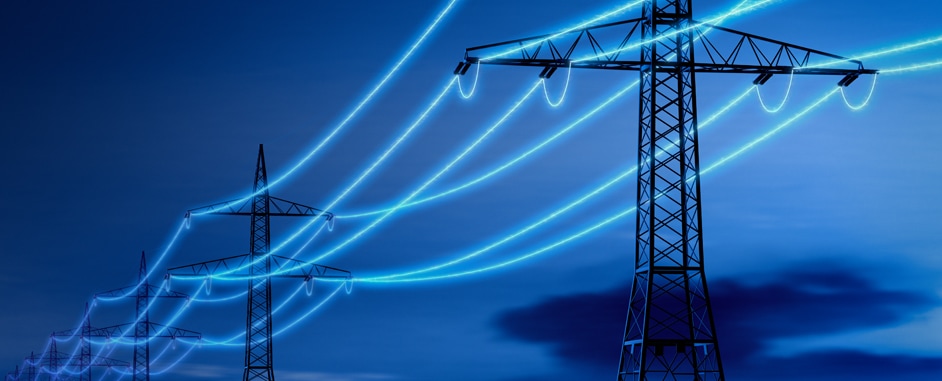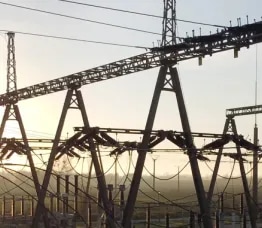Hitless IP/MPLS failover enables utmost grid resilience for electrification

Power utilities are modernizing their grids to keep pace with the demands of the growing electrification trend and the global shift towards distributed renewable energy generation. As more industries and consumers replace fossil fuel-powered heating systems, vehicles and machines with electric-powered equivalents, utilities need new technologies that will help them adapt to changing consumption patterns while continuing to provide safe, reliable, interruption-free power.
But even with new technologies, the grid is only as reliable as the communications network that supports it. The SONET/SDH- and TDM-based communications networks that support differential protection and other safety-focused applications are beyond end-of-life as semiconductor foundries move away from producing low-density wafers for TDM frame chips.
As a result, many utilities are migrating protection and other grid communications to IP/MPLS-based wide area networks (WANs) that can provide better network service performance, scalability and insights into grid operations. This migration will help them prepare to support cutting-edge IP/Ethernet-based protection, automation and control applications while providing the same stringent network reliability as SONET/SDH and TDM.
Meeting the communication demands of differential protection relays
To maintain the highly reliable electricity services that customers expect, utilities must ensure that they can meet the communication needs of differential protection relays during and after the migration to IP/MPLS.
Differential protection can be considered the cornerstone among various grid applications because of its importance in ensuring the reliability and safety of the grid. Using a differential relay, a utility can continuously measure and compare the current at each end of a power line and determine whether any current is leaking from the line. If the relay detects a leak caused by of faulty lines or parts, it trips the circuit to de-energize the line to isolate the faults and prevent damage to the grid, particularly high-voltage transformers.
A differential relay needs a fast, secure and highly available communication channel to transmit current measurements from its end of a line while remaining time-synchronized with the relay at the other end. Therefore, the network must be able to transmit the current data with consistent network delay in both directions, minimum delay variation (jitter) and the strongest possible resiliency.
Network redundancy is critical for ensuring that differential protection relays can keep protecting the grid even if network faults occur. However, while traditional TDM network redundancy protection schemes can switch to a standby link quickly enough, they would still incur data loss and interrupt relay operations.
For example, SONET/SDH automatic protection switching (APS) supports a switchover time of 60 milliseconds. This relatively quick switch over time could still result in data loss that disrupts the performance of the differential protection application and impacts the reliability of the grid.
Hitless failover keeps line protection communications up and running
Nokia solves the problem of ensuring highly resilient differential protection communications over IP/MPLS with an innovative hitless failover mechanism. This failover mechanism marries the Nokia innovation of active/active hitless pseudowire redundancy switching with another Nokia innovation called asymmetric delay compensation (ADC).
The failover mechanism enables data traffic from the relay to be replicated and transmitted over up to four active IP/MPLS paths in the network simultaneously. If communications are disrupted on some paths, the failover is hitless so that the receiving relay will not detect any error and there will be no impact on protection performance.
Failovers enabled by this mechanism are hitless because, unlike methods based on APS or other IP/MPLS fault recovery mechanisms, this Nokia innovation doesn’t require a switchover to a standby path when network faults occur because relay traffic is replicated by the IP/MPLS service router for all active IP/MPLS paths.
At the receiving IP/MPLS service router, even if there are network faults, hitless failover will not incur delay asymmetry because of the intelligent ADC capability. This ensures that communications between the two line differential protection relays are always up and running without interruption. By maintaining continuous relay communications, the Nokia innovation ensures that the integrity of the grid is protected at all times.
Validating the failover mechanism with industry partners
We have collaborated with industry partners to conduct extensive tests of the hitless failover mechanism and its ability to maintain highly resilient communications for TDM- and Ethernet-based line differential protection services over an IP/MPLS WAN.
For a recent collaboration with Siemens and Dutch distribution system operator Stedin, we tested the robustness of the mechanism for TDM-based protection services. The test setup used a pair of protection devices with a C37.94 interface to the IP/MPLS network, which provided two active connections between the protection devices across completely diverse paths. The setup also used standards-based Circuit Emulation methodology for transporting TDM data over the packet-switched network, along with Synchronous Ethernet (SyncE) to keep all the nodes in the network synchronized.
The tests focused on several different failure scenarios, including link failures, fiber cuts, congestion, node failures, port failures, card failures and router failures. The aim was to verify that the hitless failover mechanism could provide:
-
Highly reliable communication with very few corrupted and dropped frames or packets
-
Highly available communication with the shortest possible network recovery time
-
Minimal network delay to ensure a fast protection tripping time
-
Appropriate measures for traffic segregation and QoS
-
Constant, symmetric network delay with minimum jitter for protection communications
-
Highly accurate and available time synchronization.
The results proved that the active/active multipath setup meets these requirements and provides a superior level of resiliency to the line differential protection system. A failure in either path did not affect the performance of the protection relays, and no errors were recorded. As expected, when both devices failed, the protection devices detected a communication failure. Other local protection schemes continued to function as normal.
Find out more
You can read more about the tests and their promising results in a CIGRE technical paper we created with our colleagues from Stedin and Siemens.
To learn more about considerations and strategies for migrating differential protection traffic to IP/MPLS, you can read our e-book on reliable, secure teleprotection over packet networks.





